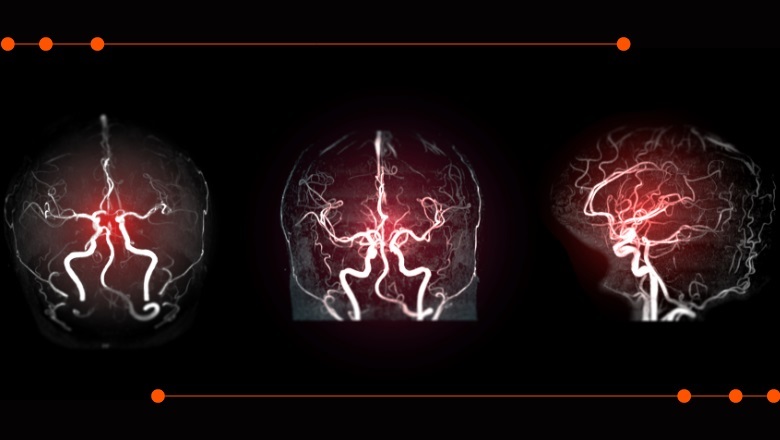Robotics Combined with AI Improves Safety in Emergency Stroke Surgeries
|
By HospiMedica International staff writers Posted on 20 Jun 2024 |

Cardiovascular diseases remain the leading cause of death throughout Europe, resulting in over 4 million fatalities annually. Mechanical thrombectomies (MT), which involve the surgical removal of blood clots from large blood vessels, have become a standard treatment for patients experiencing such blockages, particularly strokes. The time between the first onset of stroke symptoms to the initiation of treatment is critical; the sooner the clot is removed, the greater the chance that the patient will regain independence after a stroke. Researchers are now focusing on how surgical robots, autonomously guided by artificial intelligence (AI), might improve the safety and efficiency of these procedures.
Researchers at King’s College London (KCL, London, UK) utilized computer modeling to demonstrate that the initial step of the MT procedure, which involves navigating catheters and wires from the groin into the neck vessels, can be performed autonomously using AI navigation. The team adopted inverse reinforcement learning (IRL) to train new AI models. In their studies to assess the viability of IRL for navigation, they compared the effectiveness of single-device tracking (guidewire alone) versus dual-device tracking (catheter and guidewire together), finding both methods highly successful with success rates of 95% and 96%, respectively.
However, the dual-device tracking, which simulates the actions of an expert, showed that integrating IRL with a dense reward function, known as reward shaping, leads to higher overall success rates and reduced procedure times compared to existing methods. The model developed through reward shaping leverages demonstrator data via IRL to navigate towards the target effectively, while the dense reward function encourages quick and efficient progress towards the target, minimizing the number of steps needed.
"Our research uses AI to show, for the first time, how to autonomously navigate medical instruments from the groin to the neck in blood vessels. This is an important part of MT, which removes clots from blood vessels. We also explored various methods to teach the AI,” said King’s PhD student Harry Robertshaw. “We found that using real-life examples to guide the AI, a technique known as 'inverse reinforcement learning', improves its performance compared to the best current methods. Moving forward we can use these new techniques to create models that may be able to navigate unseen patient blood vessels, moving us closer to realizing the full benefits of robotic MT with autonomous assistance.”
“Our work is another step forwards towards improved procedural accessibility and precision of autonomous endovascular navigation tasks,” added Dr. Thomas Booth, Reader in Neuroimaging, School of Biomedical Engineering & Imaging Sciences. “For mechanical thrombectomy, the work plausibly lays the foundation for potentially transformative patient care - for example by treating patients more safely by using AI assistive navigation technologies.”
Related Links:
King’s College London

Channels
Critical Care
view channel
Mass Manufactured Nanoparticles to Deliver Cancer Drugs Directly to Tumors
Polymer-coated nanoparticles loaded with therapeutic drugs hold significant potential for treating cancers, including ovarian cancer. These particles can be precisely directed to tumors, delivering their... Read more
World’s Smallest Pacemaker Fits Inside Syringe Tip
After heart surgery, many patients require temporary pacemakers either to regulate the heart rate while waiting for a permanent pacemaker or to support normal heart rhythm during recovery.... Read more
AI-Powered, Internet-Connected Medical Devices to Revolutionize Healthcare, Finds Study
A new study suggests that artificial intelligence (AI)-powered, internet-connected medical devices have the potential to transform healthcare by enabling earlier detection of diseases, real-time patient... Read morePatient Care
view channel
Portable Biosensor Platform to Reduce Hospital-Acquired Infections
Approximately 4 million patients in the European Union acquire healthcare-associated infections (HAIs) or nosocomial infections each year, with around 37,000 deaths directly resulting from these infections,... Read moreFirst-Of-Its-Kind Portable Germicidal Light Technology Disinfects High-Touch Clinical Surfaces in Seconds
Reducing healthcare-acquired infections (HAIs) remains a pressing issue within global healthcare systems. In the United States alone, 1.7 million patients contract HAIs annually, leading to approximately... Read more
Surgical Capacity Optimization Solution Helps Hospitals Boost OR Utilization
An innovative solution has the capability to transform surgical capacity utilization by targeting the root cause of surgical block time inefficiencies. Fujitsu Limited’s (Tokyo, Japan) Surgical Capacity... Read more
Game-Changing Innovation in Surgical Instrument Sterilization Significantly Improves OR Throughput
A groundbreaking innovation enables hospitals to significantly improve instrument processing time and throughput in operating rooms (ORs) and sterile processing departments. Turbett Surgical, Inc.... Read moreHealth IT
view channel
Printable Molecule-Selective Nanoparticles Enable Mass Production of Wearable Biosensors
The future of medicine is likely to focus on the personalization of healthcare—understanding exactly what an individual requires and delivering the appropriate combination of nutrients, metabolites, and... Read more
Smartwatches Could Detect Congestive Heart Failure
Diagnosing congestive heart failure (CHF) typically requires expensive and time-consuming imaging techniques like echocardiography, also known as cardiac ultrasound. Previously, detecting CHF by analyzing... Read morePoint of Care
view channel
Handheld, Sound-Based Diagnostic System Delivers Bedside Blood Test Results in An Hour
Patients who go to a doctor for a blood test often have to contend with a needle and syringe, followed by a long wait—sometimes hours or even days—for lab results. Scientists have been working hard to... Read moreBusiness
view channel
Expanded Collaboration to Transform OR Technology Through AI and Automation
The expansion of an existing collaboration between three leading companies aims to develop artificial intelligence (AI)-driven solutions for smart operating rooms with sophisticated monitoring and automation.... Read more
















